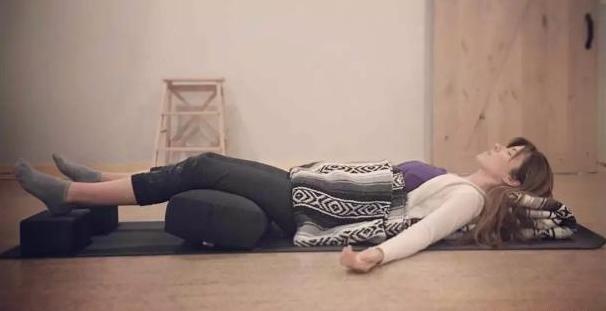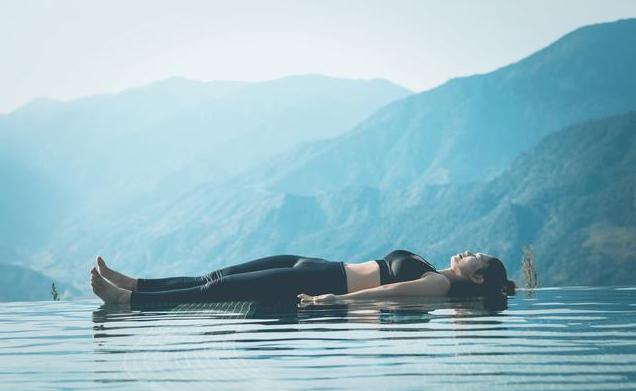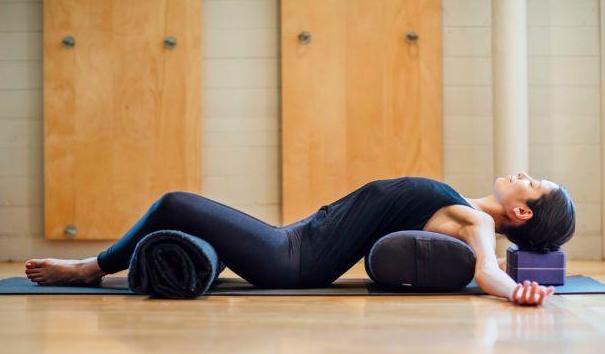Yoga Stretcher Pose, which is a seemingly simple pose, is actually harder than you think. This is because the body can be disturbed, making it challenging. Your body may feel cold, itchy or restless. Corpse stall is usually done at the end of your yoga practice, and by the time you finish the asana, your mind and body should be tired enough to relax sufficiently to perform the stall.
Some of the thoughts that often come up during Savasana are: How much longer do we have to be here? Who's snoring? What am I going to do for dinner when I get home? Is this a really good relationship? I'm hungry. Maybe I should quit my job.

It's normal for the brain to try to resist deep relaxation. The stretcher pose is the ultimate expression of conscious submission. It takes practice and patience. As the pace of life increases, we tend to live our lives with a greater emphasis on speed and efficiency; learning to relax is a skill that can help you become more productive when you need to be. Corpse stall pose helps us learn how to surrender completely, stop fighting, and make room for peace and harmony to fill the soul. Corpse stance is like shutting down your computer when it has a problem. After restarting, the computer usually has more powerful functions.

5 steps to successfully practicing Stall Pose
1, Preparation: Lie on your mat and make sure you feel comfortable. Use a cushion, pillow, blanket, and cover your eyes with an eye pillow or towel. The more comfortable you are, the more relaxed you will be. The more relaxed you are, the easier it is to let go. The more open you are to letting go, the more benefits you get.
2. Cleansing Breath: Your teacher may prompt you to let out an audible exhale, signaling your body to move into the pose. This cleansing breath will also send a message to your parasympathetic nervous system that it is safe to relax and stay in place.

3. Tension: mentally run through all parts of your body and try to make them heavier. Keep an eye out for pressure hidden in your chin, temples, shoulders and hips, as stress likes to build up in these areas.
4. Note: Some days it will be easier, which is part of the exercise. See if you can stay quiet, relaxed, and trust the breath to take you to the next moment. Pay attention to those moments of calm between thoughts. Over time, they will grow longer and you will find more inner peace.
5. Goal: Before you leave the stall pose, take a mental snapshot of how you feel on each level. Ask yourself what you want to take away from your practice and what you want to leave behind. Seal these observations in your mind with an inner smile, then enjoy a deep breath to wake you up. Finally take a moment to observe if you are more awake and energized than you were before.

Stretcher pose is a time to rest, but not a time to sleep. If you have a tendency to fall asleep, the first step is to be compassionate with yourself and acknowledge that your body needs rest. Over time, you can train yourself to get the rest you need while staying awake.
Popular Articles
-
Fitness Equipment | How to choose a suitable for their own yoga mat?

-
 Home storage tips ---- hidden storage
Home storage tips ---- hidden storageMay 20, 2025
-
 These "home essential" recommended good things, small objects of great use!
These "home essential" recommended good things, small objects of great use!May 20, 2025
-
 The world's most clean animal
The world's most clean animalMay 20, 2025
-

Photos
The world's most beautiful big cities at nightMay 20, 2025
-
 Nourishing Blood and Staying Beauty, Strengthening Brain and Resisting Senility | Fried Black Fungus with Day lily
Nourishing Blood and Staying Beauty, Strengthening Brain and Resisting Senility | Fried Black Fungus with Day lilyMay 20, 2025







Comments
0